continual
Type of resources
Topics
Keywords
Contact for the resource
Provided by
Years
Formats
Representation types
Update frequencies
Scale
Resolution
-
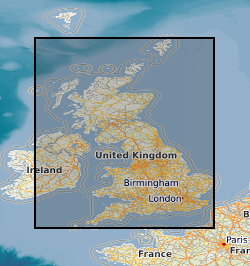
Digital hourly mean values of the Geomagnetic field elements from Lerwick, Eskdalemuir, Abinger and Hartland Observatories. Eskdalemuir data are available from 1911, Lerwick from 1926, Hartland from 1957 and all three are available up to yesterday's date. Values from Abinger (1926-1956) are available on request. Most data are definitive, but recent data (within the last 203 years) are provisional and may be corrected in the future. Values of declination (D), horizontal intensity (H) and vertical intensity (Z) are available. The units of declination are degrees. Declination is negative when west of true north. The units of horizontal intensity and vertical intensity are nT (nanotesla). Vertical intensity is positive in the downwards direction. The data from these observatories will not only aid scientific research into rates of change of the magnetic field and increase the accuracy of the BGS Global Geomagnetic Model, but will also provide data to exploration geophysicists engaged in current and future oil exploration.
-
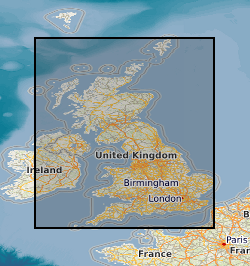
Records of all onshore (or near shore) boreholes, trial pits, shafts and wells held in the BGS archives in either paper, microfilm or digital format. The records range from simple single page lithological logs through to hydrocarbon completion reports. Spatial coverage will vary considerably depending on drilling activity, collecting activity and donations. The majority of new data is from site investigation reports with concentrations in urban areas and along transport routes. Current collection over 1million records covering the whole of Great Britain with 50,000 new records added per annum. Some records date back to 1600 but the majority date from 1900 onwards. Copies of records are available in hard copy or digital formats subject to confidentiality.
-
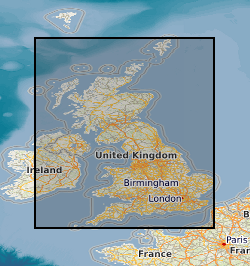
The Single Onshore Borehole Index (SOBI) is an index of over 1 million boreholes, shafts and wells and references collections of digital and analogue records from all forms of drilling and site investigation work held by the BGS. The index covers onshore and near shore boreholes from Great Britain dating back to at least 1790 and ranging from one to several thousand metres deep. Some 50,000 new boreholes are added each year. The majority of the records contain written descriptions of the ground encountered. The SOBI index database originated in 1988 from a number of existing tables and from data input from a variety of coding forms. Therefore not all fields in the database are populated and data that should be in some fields may currently form part of the entries in another. The index is available on the BGS website via the Geoindex
-
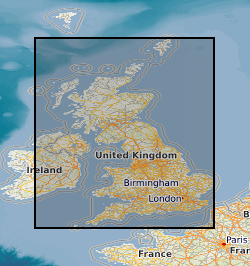
Digital one-minute values of the Geomagnetic field elements from Lerwick, Eskdalemuir and Hartland Observatories. Data are available from 1979 up to the present day. Most data are definitive, but recent data (within the last 2-3 years) and data between 1979 and 1982 are provisional and may be corrected in the future. The data from these observatories will not only aid scientific research into rates of change of the magnetic field and increase the accuracy of the BGS Global Geomagnetic Model, but will also provide data to exploration geophysicists engaged in current and future oil exploration.
-
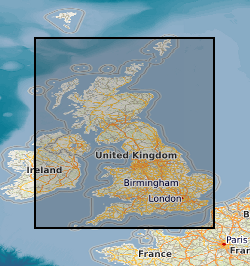
Scanned images of the records of onshore Great Britain (or near shore) site investigation reports held in the BGS archives in paper, microfilm or digital format. The entire collections in BGS Edinburgh have been scanned, but in BGS Keyworth currently only new reports received since 2002. Scanning started in 2002 and is ongoing with new records being scanned and added to the collection. Images are stored in TIFF format (Tagged Image File Format). Indexed on the site investigation database and the boreholes within the report, and their images, are associated via the borehole database.
-
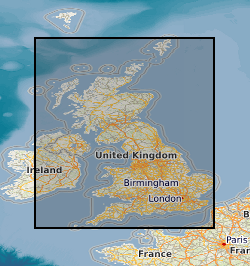
The Geophysical Borehole Log index provides details of all digital geophysical logs available to BGS. The database provides the borehole metadata related to logging and metadata for the logging itself and log data stored in a proprietary hierarchical database system (PETRIS RECALL). Contains most digital geophysically logged bores known to BGS National Geological Records Centre. Scattered distribution of boreholes, locally dense coverage, relatively few logs from Scotland & Central Wales, increasing data density on UK continental Shelf.
-
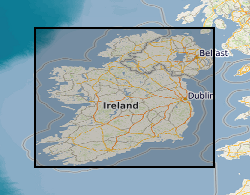
A 1:250,000 map showing the main geological bedrock divisions in Northern Ireland. The bedrock shown on GeoIndex map comprises the bedrock geology, which represents the outcrops (at surface) and subcrops (at near-surface, beneath superficial deposits) in Northern Ireland. For each rock unit there is a brief generalised description showing the major rock group, rock type and age under the following headings. LEX_D: The name of the selected area. This can be a group, formation or igneous intrusion e.g. dyke. LEX_RCS: Map code as it appears on the published 1:250,000 map. RCS_D: The name of the dominant types of rock (lithologies) in the different areas shown on the map e.g. granite. The names of the rock types given here are often generalisations, appropriate for the large areas of geological coverage at this scale. These areas may include a number of different geological formations whose distribution can only be portrayed on more detailed geological maps. RANK: Identifies formations and groups. Min_Time_D and Max_Tim_D: The age of the rock unit in terms of periods, relatively smaller units of geological time e.g. Carboniferous, Jurassic etc. Some of the map areas include rocks with a range of ages and these are shown as such e.g. Triassic to Cretaceous. The oldest metamorphic rocks are described as Moinian and Dalradian. The rocks range in age from those deposited relatively recently, some 2 million years ago, back to ancient and highly altered Precambrian rocks over 2500 million years old. In broad terms the youngest rocks are found in the south and east of the UK, the oldest in the north and west. VERSION: Version of the data. RELEASED: Date of release/update of the data. CAUTION Because of the generalisation and simplification used in the compilation of this map, it should not be used to determine the detailed geology of any specific sites. It is best used to provide a basic understanding of the geology of the country in general, and for showing the geology of large regions where broad trends are more important than specific details. Persons interested in the detailed geology of particular sites should consult the latest large-scale maps or the Geological Survey of Northern Ireland.
-
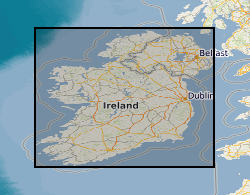
Superficial Geology (250k) This layer shows the superficial (drift) geology of Northern Ireland at 1:250,000 scale. For each rock unit there is a brief generalised description under the following headings. LEX_D: Description of the selected polygon. LEX_RCS: Map code as it appears on the published 1:250,000 map. RCS_D: Decription of the deposit. VERSION: Version of the data. RELEASED: Date of release/update of the data. Persons interested in the detailed geology of particular sites should consult the latest large-scale maps or the Geological Survey of Northern Ireland at:- Geological Survey of Northern Ireland Colby House Stranmillis Court Belfast BT9 5BF
-

1:50,000 maps showing the main geological superficial divisions in Northern Ireland. This series shows the superficial (drift) geology of Northern Ireland at 1:50,000 scale. For each rock unit there is a brief generalised description under the following headings. LEX_D: Description of the selected polygon. LEX_RCS: Map code as it appears on the published 1:250,000 map. RCS_D: Decription of the deposit. VERSION: Version of the data. RELEASED: Date of release/update of the data. Persons interested in the detailed geology of particular sites should consult the latest large-scale maps or the Geological Survey of Northern Ireland at:- Geological Survey of Northern Ireland Colby House Stranmillis Court Belfast BT9 5BF
-
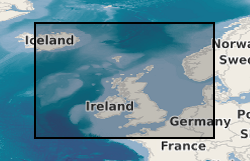
This dataset is the complete collection of the British Geological Survey (BGS) held Marine Survey data. The data held includes digital data and analogue records, plus associated physical sample material. Data are stored within the National Geosciences Data Centre (NGDC) and the Marine Environmental Data and Information Network (MEDIN) Data Archive Centre (DAC) for Geology and Geophysics. BGS have collected Marine Survey data since 1966 and have also been provided with a range of third-party data. The data includes geophysical data (seismic reflection, side-scan sonar, multibeam echosounder bathymetry and backscatter, gravity and magnetics) and sample data from boreholes, cores and seabed grabs (logs, geological descriptions, geochemical, particle size analysis and geotechnical data). The majority of surveys are within the United Kingdom Continental Shelf (UKCS) area. Individual survey data coverage varies, depending on survey type (sampling, geophysics, multibeam or multi-disciplinary) and objectives (regional or local, shallow or deep). These data are applicable to a wide range of uses including environmental, geotechnical, geophysical and geological studies. Data are delivered via the BGS Offshore GeoIndex www.bgs.ac.uk/GeoIndex/offshore.htm. Additional data are available on request enquiries@bgs.ac.uk.
 BGS Data Catalogue
BGS Data Catalogue